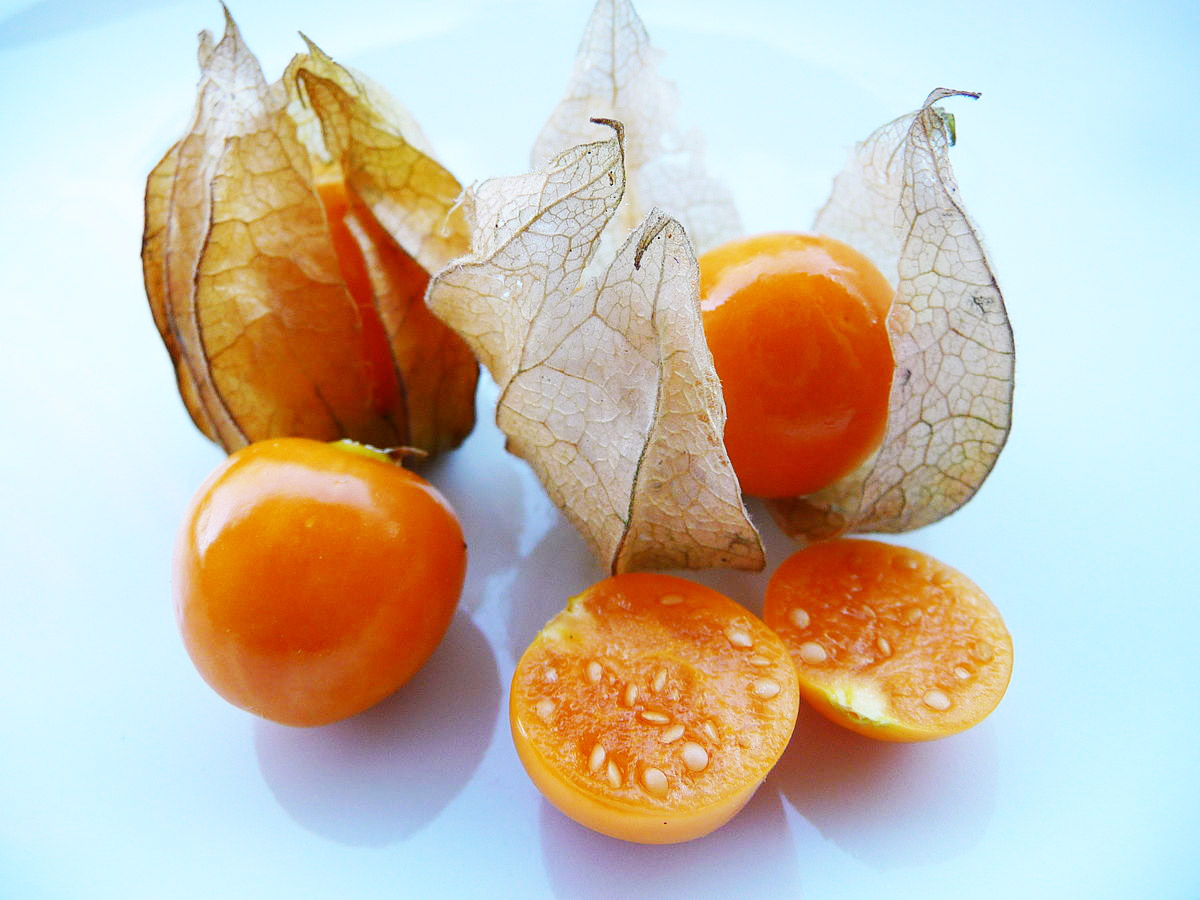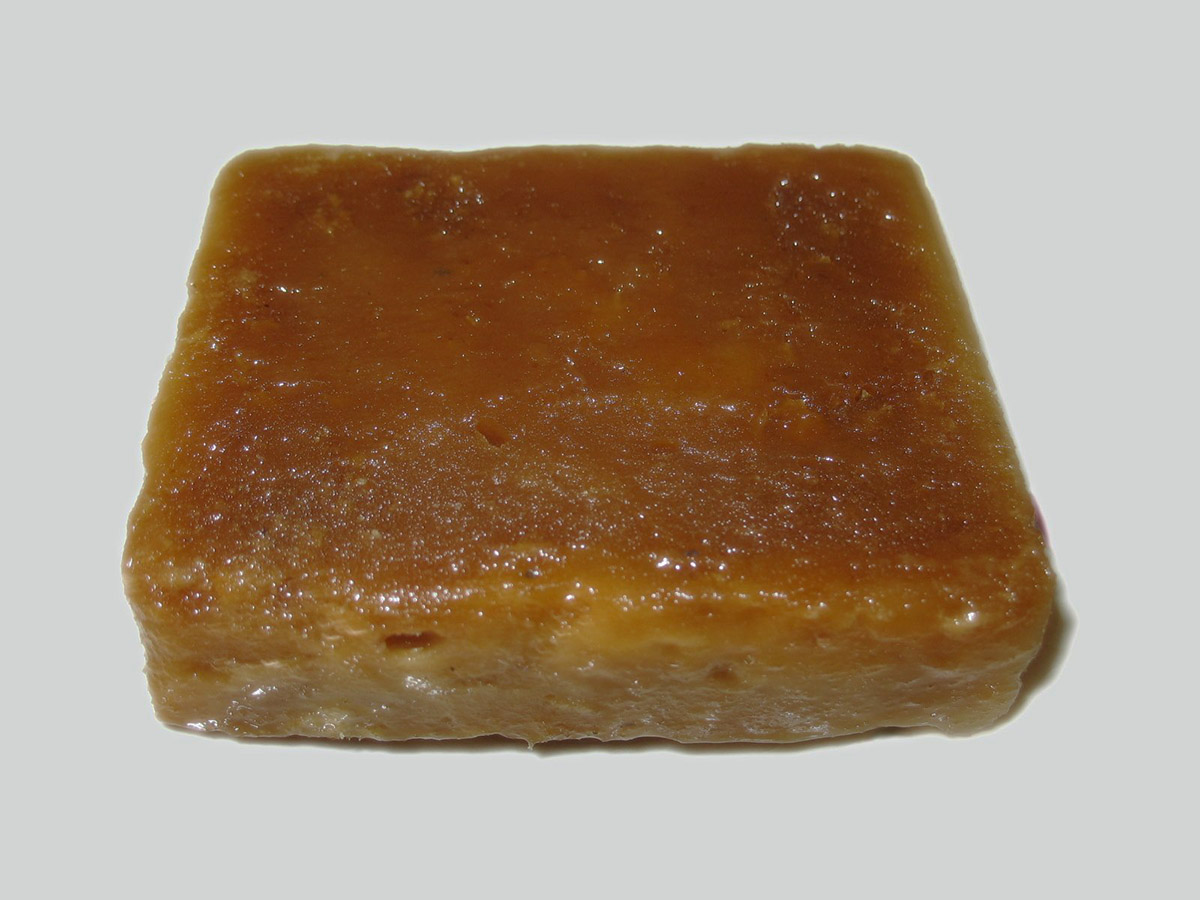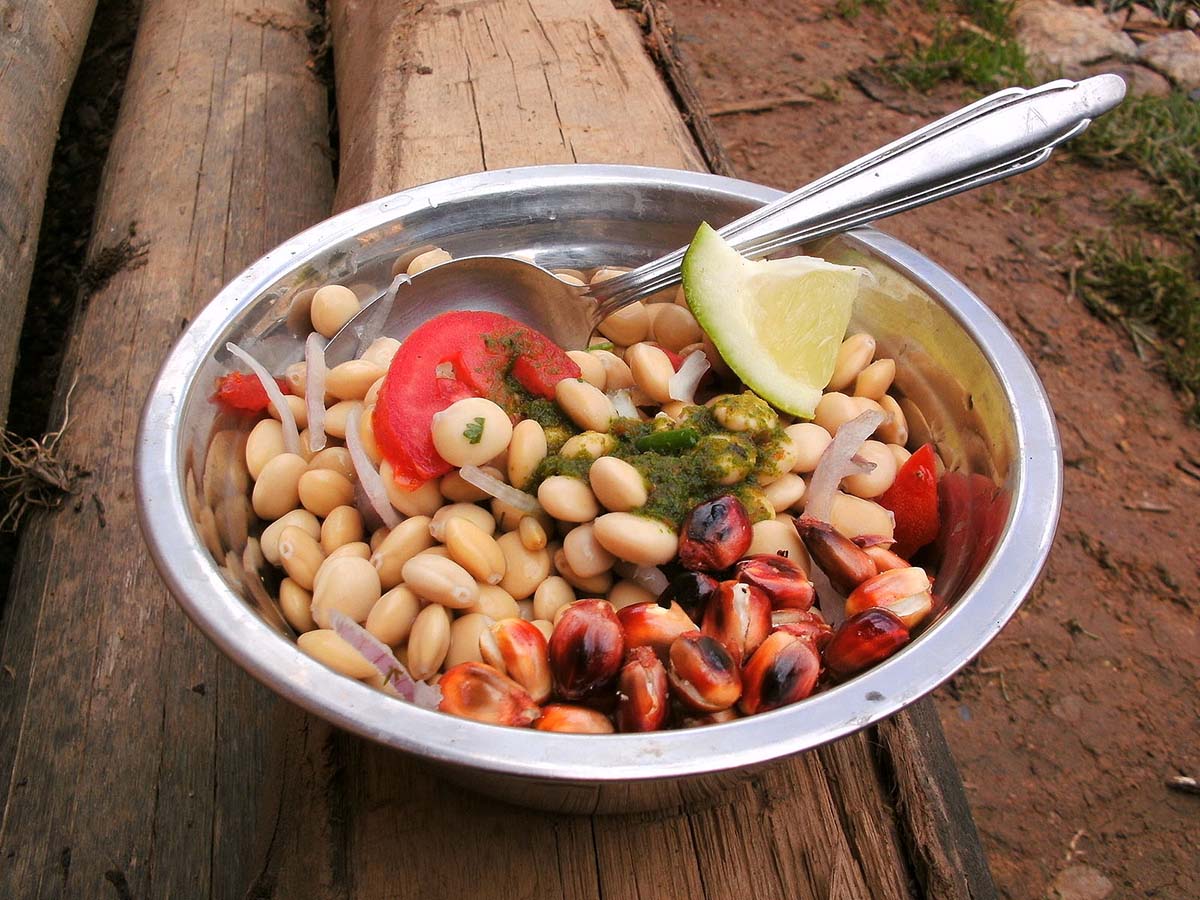
“Superfoods” are a category of nutritionally dense foods including fruits, vegetables, nuts, grains and fish. In their natural, unprocessed form, superfoods contain disease-fighting vitamins, minerals, antioxidants, proteins, oils and essential fatty acids. When paired with a healthy diet and exercise, Peruvian superfoods can promote physical and mental well-being.
Peru’s national pantry is broad and deep, stocked by extreme ecological and cultural diversity. In fact, the country’s diverse geography includes 28 of the world’s 32 climate zones, which perhaps explains the abundance of superfoods that originate here. Even if their impressive nutritional benefits don’t grab your attention, the superfoods that we share with you in this blog are ridiculously delicious, too.
Lucuma is the fruit that grows on the Pouteria lucuma tree, a species of Sapotaceae tree that grows in Andean valleys. From the outside lucuma looks like an avocado, but cut it open and its insides reveal rich golden orange tones. Known as the preferred fruit of the Incas, and beloved to this day, lucuma has a wonderfully creamy texture and a caramelly, desert-like flavor that makes it irresistible. Best part: it’s super healthy, too! We can’t get enough.

Lucuma, a popular Peruvian superfood known for its unique maple sweet potato flavor. Photo by Mi Peru on Flickr
Also known as the Inca berry, goldenberries are another superfood that make a great snack or addition to your morning breakfast. In Peru, goldenberries are called aguaymanto, and are actually related to tomatillos. The berries grow on the Physalis peruviana plant, a nightshade species with its origins in Peru. Interestingly, this fruit has a strong citric flavor with a little sweetness too, and research shows that its cultivation dates back to the times of the Inca.

Aguaymanto, a Peruvian superfood that grows on the slopes of the Andes Mountains. Photo by 3268zauber on Wikipedia.
Kiwicha, also known as amaranth or “mini quinoa” is one of the healthiest, most popular Andean superfoods. This edible seed grows on the Amaranthus caudatus plant, an annual flowering plant native to South America. The plant itself is sometimes referred to as the love-lies-bleeding plant, perhaps due to the bright red appearance from its high content of betacyanins – a rich antioxidant. These little seeds are dense with nutrients and have been farmed in Peru for more than 4000 years. Also, as a plus, they’re gluten free!

Kiwicha, also known as amaranth, is rich in vitamin C and fiber. Photo by Crops for the Future on Wikimedia Commons.
Yes, you read that correctly: corn that is purple. Purple corn, or Maiz morado in Spanish, only grows in Peru and has been cultivated by cultures from the region for thousands of years. So, you’re probably wondering where this corn gets its purple hue? The pigment responsible for its dark purple color is anthocyanin, which is a powerful antioxidant with many health benefits. Purple corn may look and taste similar to its yellow corn cousin, but it’s actually packed with way more antioxidants, protein and fiber.

Peruvian purple corn, known for its high levels of antioxidants. Photo by Daniel Bahn Petersen on Pexels.
In Peru, quinoa is the undeniable superstar among power foods. Quinoa, Chenopodium quinoa, has been cultivated in the Andes for millennia, and is a flowering plant in the amaranth family. The quinoa seeds are gluten-free, making it a popular option for those with celiac disease. It is native to the Lake Titicaca basin of the Peruvian highlands, and humans ate it for 4,000 years and fed it to livestock for as many as 7,000 years. As you can see, this plant is truly exceptional when it comes to the history of Peruvian superfoods.

Quinoa, a famous superfood pseudo-cereal packed with protein. Photo by Nerissa’s Ring on Flickr.
Camu camu is the cherry-sized, purple-red fruit of a low-growing shrub with the scientific name Myrciaria dubia. It is native to the Amazon lowland rainforests of Peru and Brazil. In fact, the plant can survive underwater for up to 5 months and local people harvest camu camu by canoe. The skin of the camu camu berry paints juices and pulps a delicious shade of pink. Actually, this Peruvian superfood is known for its vitamin C content and per ounce has 30 to 50 times more vitamin C than an orange.
Amazon Rainforest Tours:

Camu camu is an Amazonian superfood with the highest levels of vitamin C in nature. Photo credit: Public domain by pxhere.
Lepedium meyenii, or maca, is a cruciferous root vegetable that looks like a radish or turnip. The dried maca root has the nickname “Peruvian ginseng,” not because of any relationship between the plants, but rather because of its effects, particularly when it comes to physical stamina, endurance, and sexual energy. In Peru, studies reveal that maca fueled the expansion of the Inca empire and stories are told of Inca warriors fed on diets heavy in maca in preparation for battle. Today, maca is widely regarded as a natural energizer and is consumed across South America.

Maca, also known as Peruvian ginseng, in powder form. Photo by William Ismael on Flickr.
The perennial plant Plukenetia volubilis is endemic to the high altitude rainforest on the eastern slopes of the Andes in Peru. The plant thrives in acidic, alluvial soils, and gives a green star-shaped fruit. The pods contain oval seeds that are similar to almonds in size and shape. Sacha inchi’s nickname is the Inca peanut or literally “the people’s seeds.” In archaeological excavations, scientists find representations of the sacha inchi plant on vessels in Inca tombs, suggesting that ancient people traded and consumed the seed for several centuries.

Sacha Inchi, also known as Inca Peanut, is high in protein and omega 3’s. Photo by Cesar Torres on Flickr.
Coca, or Erythroxylum coca, is grown throughout Peru, from the Andes to the Amazon basin. It also grows in Argentina, Ecuador, Bolivia and Colombia. Though traditionally a medicinal health food, coca is present in the illegal and highly addictive drug cocaine. Actually, to produce cocaine, chemists add solvents to immense quantities of the leaves and a harsh chemical process extracts the psychoactive alkaloid. However, the leaves themselves are powerful superfoods, with a strong medicinal and ceremonial role in Andean culture. People have cultivated the leaves for over 8,000 years for religious and health use, only in 1880 did a German chemist isolate cocaine through chemical extraction.

Coca leaves, a superfood known for combatting altitude sickness. Photo by Wikimedia Creative Commons.
Panela is not a Peruvian superfood, per say. It is a solid, unrefined, whole cane sugar boiled and evaporated from the sugarcane plant or Saccharum officinarum. However, in a world where people are fighting against refined sugar, panela – an unrefined, low-glycemic sweetener – is a welcome item. Panela has taken the health food world by storm in Peru, and you can find this health food product at just about every farmers market. While it’s still, in essence, a sugar, it does contain a higher level of micronutrients than its refined relative. This makes it a staple item among the health conscious.

Panela, a low glycemic cane sugar product with high micronutrient content. Photo by Jdvillalobos on Wikipedia.

Protein-dense Tarwi ceviche. Photo by Jaime Xenius on Wikipedia.
Ollucos, or Ullucus tuberosus, is a type of flowering plant cultivated mainly as a root vegetable, though the nutrient-dense leaves are also sometimes used. They may look like potatoes, but surprisingly they are a completely unrelated species botanically, and many would say the taste and consistency is quite different as well. These nutritious Peruvian superfoods have been eaten by indigenous people of the Andean highlands since ancient times, and are popular in Peruvian cuisine to this day. Olluco is very versatile and actually an excellent source of protein and other key nutrients.

Though olluco looks like potato, it is unrelated botanically and in taste. Photo by Eric Hunt on Wikimedia Commons.
Yacon, Smallanthus sonchifolius, also known as Peruvian ground apple, is a type of perennial daisy with origins in the northern and central Andes Mountains of Peru and surrounding countries. It has an appearance similar to sweet potato with the texture and flavor similar to jicama. Ancient people of Peru used yacon as a medicinal plant and prepared it in a variety of stews and other dishes. Interestingly, the Inca and the even earlier the Moche civilization enjoyed this food during special occasions and spiritual ceremonies. Today, yacon syrup, makes a sweet syrup that is super low glycemic with powerful health benefits.

Yacon, also known as Peruvian ground apple, can boost immunity. Photo by NusHub on Wikimedia Commons.
If you didn’t know any of the other Peruvian superfoods on the list, you certainly know this one. The Theobroma cacao plant bears cocoa beans – the dried and fermented seeds that make chocolate. And guess what? Cacao, dearly beloved across the globe, is native to the Amazon basin and Andean foothills of Peru, Ecuador and Colombia. Moreover, this popular superfood, while being delicious, is rich in minerals and antioxidants. In fact, theobroma means “food of the gods” in Latin. Traditionally, native communities used cacao to make frothy medicinal brews mixed with fruit juices, spices and medicinal plants.

Cacao pod with raw cacao beans inside, the superfood used to make chocolate. Public domain photo on Wikipedia.
Cherimoya, Annona cherimola, also known as custard apple for its creamy consistency, grows throughout the Peruvian, Bolivian, Ecuadorian, Chilean and Colombian Andes. Researchers believed cherimoya originated in this Peru, but studies find its origins in Central America. Other spellings are chirimoya or chirimuyu, which in Quechua means “cold seeds.” This fruit is rich in vitamins and minerals, and has a super unique and delicious flavor – so much so that Mark Twain declared it “the most delicious fruit known to man.” The fleshy, sweet fruit grows on the annona cherimola tree, a low evergreen tree or shrub. This fruit is available in abundance in just about any market and fruit stand in Peru.

Cherimoya has high levels of vitamin C and tastes like a blend of pineapple and banana. Photo by Jing on Pixabay.
The best way to enjoy all of these Peruvian superfoods is to take a trip to the land where they grow. Whether from the river valleys, mountain peaks or deep jungle, these healthy whole foods can significantly improve your health – both body and mind. Peruvians celebrate the fruits, beans, roots, leaves and berries of their country from ancient times to today. Fortunately, you have the opportunity to try every single one on a trip to this prized, fertile land. Talk to a travel advisor to learn how you can incorporate superfood experiences into your Peru travel package, whether by a local market tour, farm visit or culinary experience.
Contact an expert travel advisor today to build your fully custom trip to Peru, and they can include exposure to and sampling of Peruvian superfoods.



Email: [email protected]
Sign up to receive our newsletter for great articles, stunning photos, and special deals.